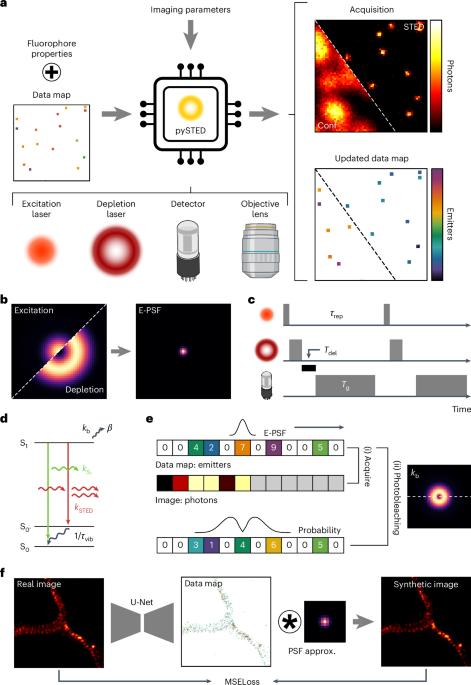Development of AI-assisted microscopy frameworks through realistic simulation with pySTED
IF 18.8
1区 计算机科学
Q1 COMPUTER SCIENCE, ARTIFICIAL INTELLIGENCE
引用次数: 0
Abstract
The integration of artificial intelligence into microscopy systems significantly enhances performance, optimizing both image acquisition and analysis phases. Development of artificial intelligence-assisted super-resolution microscopy is often limited by access to large biological datasets, as well as by difficulties to benchmark and compare approaches on heterogeneous samples. We demonstrate the benefits of a realistic stimulated emission depletion microscopy simulation platform, pySTED, for the development and deployment of artificial intelligence strategies for super-resolution microscopy. pySTED integrates theoretically and empirically validated models for photobleaching and point spread function generation in stimulated emission depletion microscopy, as well as simulating realistic point-scanning dynamics and using a deep learning model to replicate the underlying structures of real images. This simulation environment can be used for data augmentation to train deep neural networks, for the development of online optimization strategies and to train reinforcement learning models. Using pySTED as a training environment allows the reinforcement learning models to bridge the gap between simulation and reality, as showcased by its successful deployment on a real microscope system without fine tuning. Stimulated emission depletion microscopy is a super-resolution imaging technique that utilizes point scanning in fluorescence microscopy. pySTED is developed to aid in the development and benchmarking of optical microscopy experiments, testing it in both synthetic and real settings.


利用 pySTED 进行逼真模拟,开发人工智能辅助显微镜框架
将人工智能集成到显微镜系统中可显著提高性能,优化图像采集和分析阶段。人工智能辅助超分辨显微技术的发展往往受限于大型生物数据集的获取,以及在异构样本上对各种方法进行基准测试和比较的困难。我们展示了一个逼真的受激发射耗损显微镜模拟平台 pySTED 在开发和部署超分辨显微镜人工智能策略方面的优势。pySTED 集成了理论和经验验证的受激发射耗损显微镜光漂白和点扩散函数生成模型,还模拟了逼真的点扫描动力学,并使用深度学习模型复制真实图像的底层结构。该模拟环境可用于训练深度神经网络的数据增强、在线优化策略的开发以及强化学习模型的训练。使用 pySTED 作为训练环境,可以让强化学习模型弥合模拟与现实之间的差距,其在真实显微镜系统上的成功部署就证明了这一点,而无需进行微调。
本文章由计算机程序翻译,如有差异,请以英文原文为准。
求助全文
约1分钟内获得全文
求助全文
来源期刊

Nature Machine Intelligence
Multiple-
CiteScore
36.90
自引率
2.10%
发文量
127
期刊介绍:
Nature Machine Intelligence is a distinguished publication that presents original research and reviews on various topics in machine learning, robotics, and AI. Our focus extends beyond these fields, exploring their profound impact on other scientific disciplines, as well as societal and industrial aspects. We recognize limitless possibilities wherein machine intelligence can augment human capabilities and knowledge in domains like scientific exploration, healthcare, medical diagnostics, and the creation of safe and sustainable cities, transportation, and agriculture. Simultaneously, we acknowledge the emergence of ethical, social, and legal concerns due to the rapid pace of advancements.
To foster interdisciplinary discussions on these far-reaching implications, Nature Machine Intelligence serves as a platform for dialogue facilitated through Comments, News Features, News & Views articles, and Correspondence. Our goal is to encourage a comprehensive examination of these subjects.
Similar to all Nature-branded journals, Nature Machine Intelligence operates under the guidance of a team of skilled editors. We adhere to a fair and rigorous peer-review process, ensuring high standards of copy-editing and production, swift publication, and editorial independence.
 求助内容:
求助内容: 应助结果提醒方式:
应助结果提醒方式:


